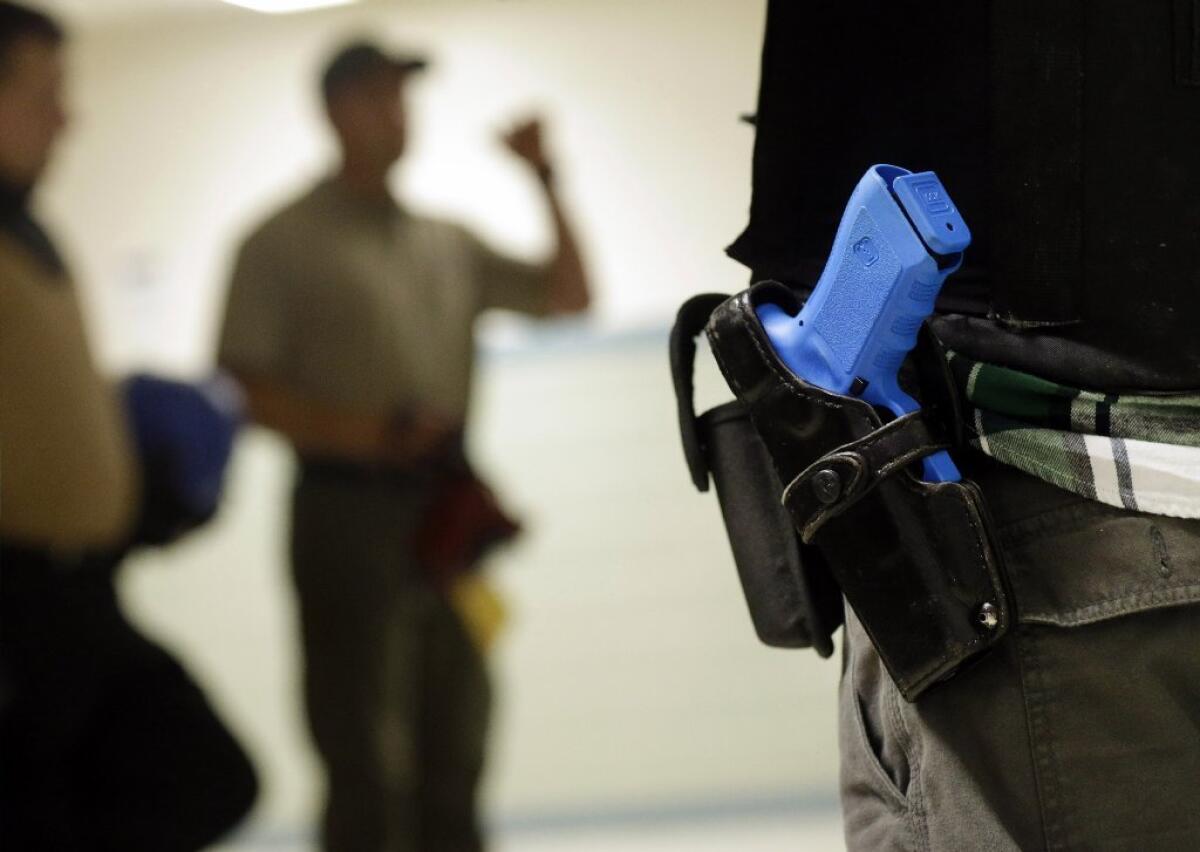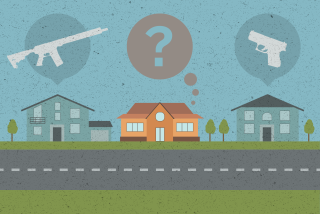Do guns make us safer?

Just days after a Washington naval installation became the site of the fourth mass shooting in the span of a year, a pair of new studies asks a shop-worn but timely question: Do more guns make us safer? Both studies conclude the answer is no. But debate over this question--political as well as academic--remains far from settled.
The latest study, published Wednesday in the American Journal of Medicine, is ambitious: It aims to tease out the relationship among gun ownership, crime, violent death and mental illness by looking across 27 industrialized countries that keep reliable data on all of those measures.
The second study, published last week in the American Journal of Public Health, focuses entirely on the United States--a patchwork of states with differing demographics, gun cultures, gun laws and crime patterns--and examines whether, over time, more guns have meant more or less gun-related homicides.
The findings of the American Journal of Medicine study may seem like an open-and-shut case against the gun lobby’s oft-repeated claim that if more law-abiding citizens had guns, we’d all be safer from gun violence: The higher the per capita rate of gun ownership, the higher the rates of firearm-related deaths, the study found.
The United States, with 88.8 guns per 100 people, had a gun-death rate of 10.2 per 100,000 people. At the other extreme, Japan, with less than one gun (0.6, in fact) for every 100 people, has a gun-death rate of 0.06 per 100,000, and the Netherlands, with 3.9 guns per 100 people, has a gun-death rate of 0.46 per 100,000 people.
In between, however, are some puzzles. In South Africa, there are 12.7 guns per 100 people--a relatively low level of firearms. Yet, the country comes in just behind the United States, at 9.41 gun-deaths per 100,000 people, in its record of armed violence.
Canada, Iceland and Norway, with 30.8, 30.3 and 31.3 guns per 100,000, have a relatively well-armed citizenry. And yet, their gun-death rates (2.44 and 1.25 and 1.87 fatalities, respectively, per 100,000 people) are roughly in line with those with many fewer guns per capita.
The study published last week by the American Journal of Public Health also concludes that a state’s rate of gun-related homicide consistently went up and down as a function of its levels of gun ownership. That relationship held even after the researchers--led by Boston University public health professor Michael Siegel--adjusted for state-to-state variances in factors that influence gun-related homicides, such as urbanization, youth population, crime, alcohol consumption, unemployment and poverty rates, educational attainment, and prevalence of hunting licenses.
Moreover, that link between gun ownership and gun-related homicide held up over close to 30 years--from 1981 to 2010.
But both studies turned up robust statistical correlation, and that tells you something, right?
Well, not exactly, says public injury expert Dr. Garen Wintemute, director of UC Davis’ Violence Prevention Research Program. Such studies do not clarify whether guns happen to be plentiful in places where the incidence of violent death is high or whether violent deaths happen more often because guns are more readily available to cause them.
In one reading, people who live in countries or states with high murder rates are more likely to arm themselves defensively--thus nudging up the gun ownership rate. In the other, the availability of guns is driving violent crime. And, of course, both may be happening.
“I’m not a big fan of correlational studies,” said Wintemute.
University of Florida gun policy expert Gary Kleck goes even further in deriding the methods by which such conclusions are drawn. Their logic is circular, said Kleck: If you’re looking at gun-related deaths, yes, you will find guns.
“By definition, it is logically impossible to commit a firearm homicide or firearm suicide without using a firearm,” Kleck told the Los Angeles Times. Even if the availability of guns had no bearing on whether they were used in homicides, “you’d expect a significant positive association between guns per capita and rates of gun-related deaths.”







